48 Hours in Mumbai
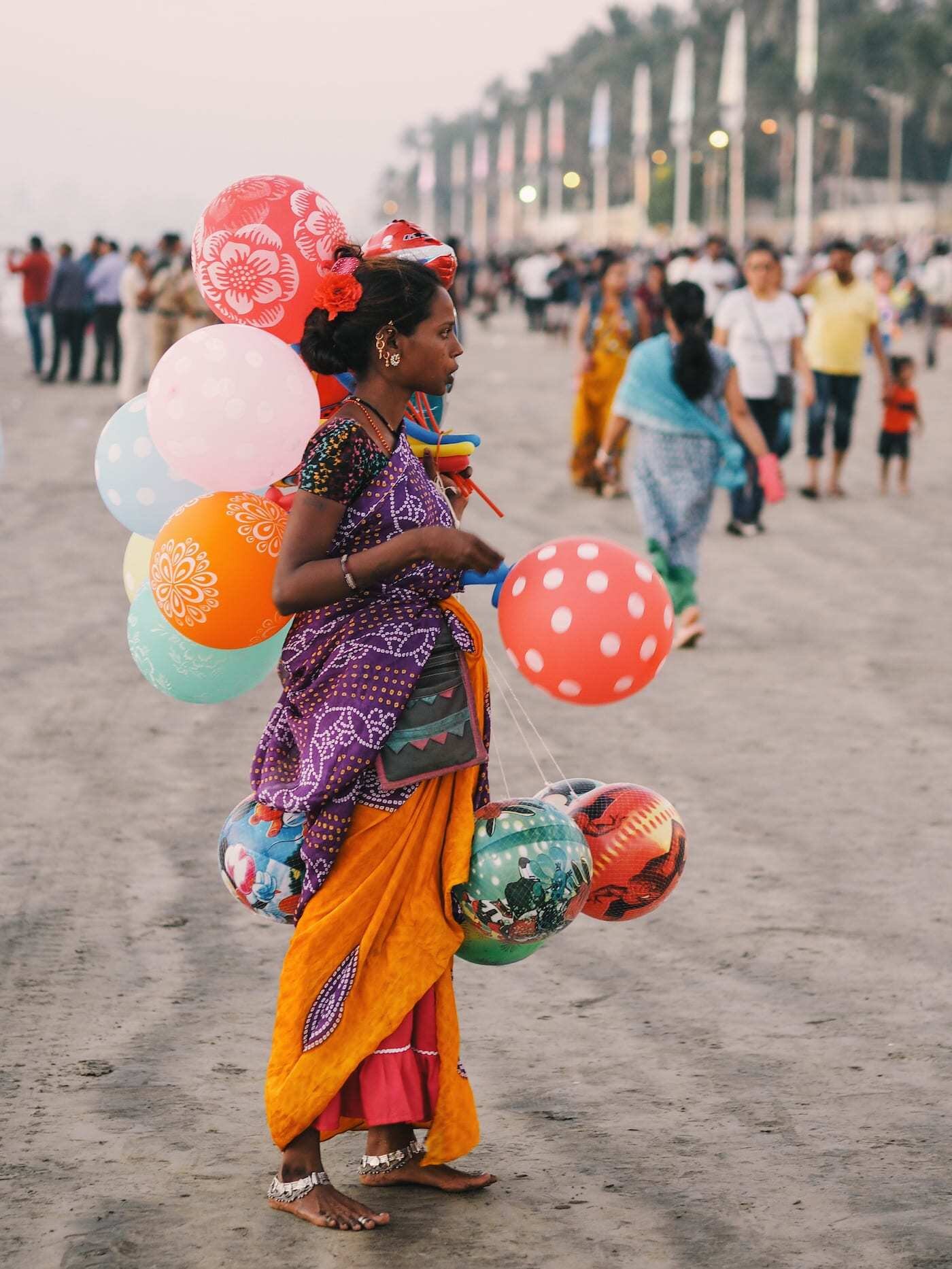
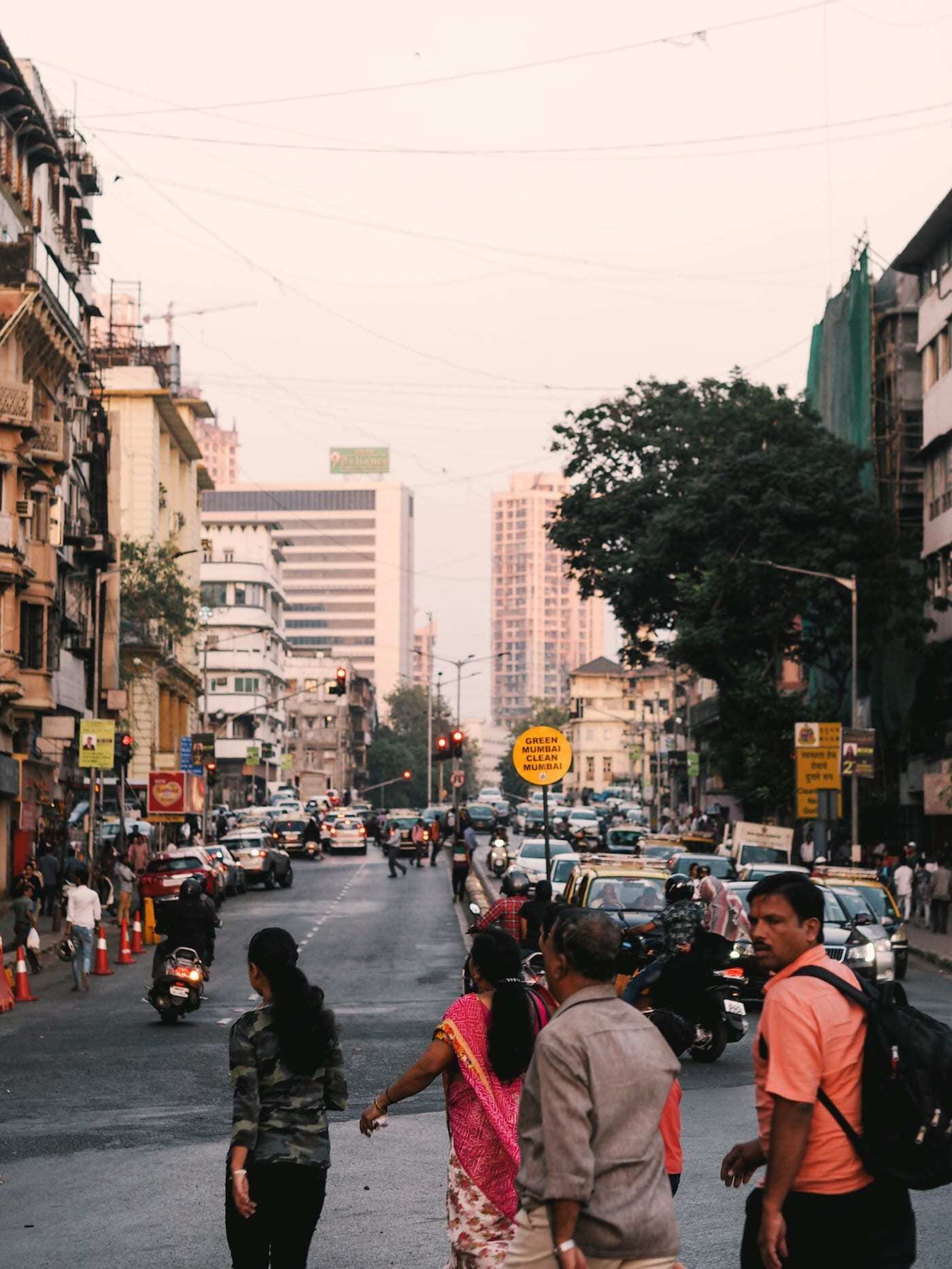
Chaotic is main word I’d use to describe Mumbai but I absolutely loved it. We spent 48 hours exploring as much of the city as we could in the baking heat and blistering humidity but it totally won me over with its grand colonial architecture, rich history, crazy traffic-riddled streets, long sandy beaches, striking sunsets, and plenty of amazing food to discover. A city of huge contrasts, there’s a large divide between rich and poor, and an astonishing 60% of Mumbai’s population lives in the slums. Right in the middle of the city, the Dharavi Slum, Asia’s largest shantytown, will stun you even seeing it just from its edges. As shambolic as it seems though, and the smell is pretty eye-watering, it’s a functioning lifestyle for many, with tenants paying rent, many with electricity, and it’s said to be home to over 20,000 businesses.
Mumbai is long and thin, and getting around takes time due to the incredulously slow moving traffic but Uber is efficient and mad cheap, and tuk tuks are great for hopping around in the northern areas. 48 hours felt like long enough to scratch its surface and see the key sights and areas, but I’m already super keen to go back for more. It’s totally captivating and is a world away from what I’m used to.
stay
Soho House Mumbai
In a city as chaotic as Mumbai, it’s nice to have a little home comfort and SOHO HOUSE MUMBAI provides exactly that. It’s supremely comfortable, beautifully designed, well located on Juhu Beach in the Western Suburbs, and it has a killer rooftop complete with pool and comfy cabanas - great for drinking refreshing cocktails in the city’s baking heat. Rooms are spacious and overlook the beach, and every little detail seems thoroughly thought out so you can totally relax.
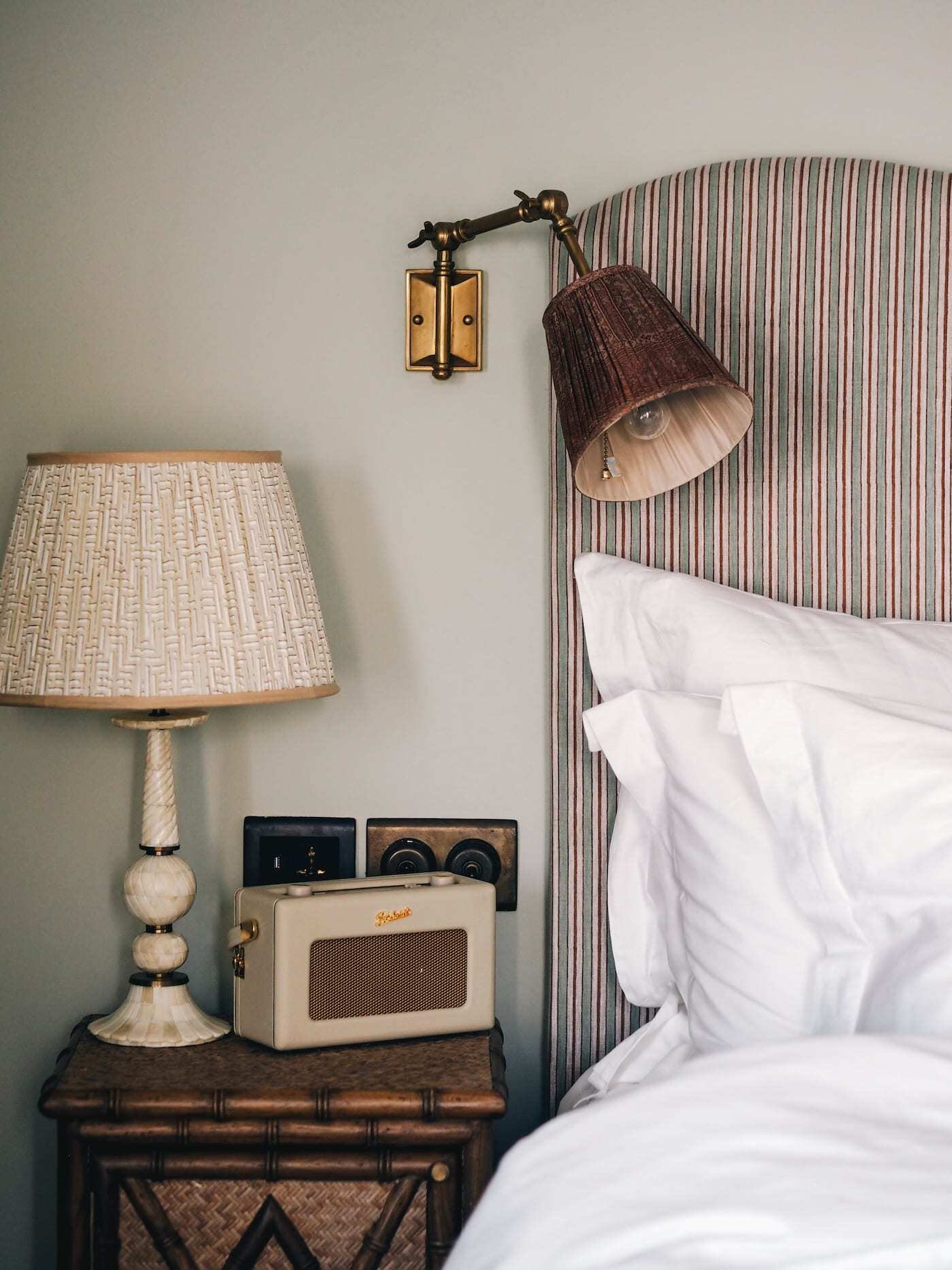

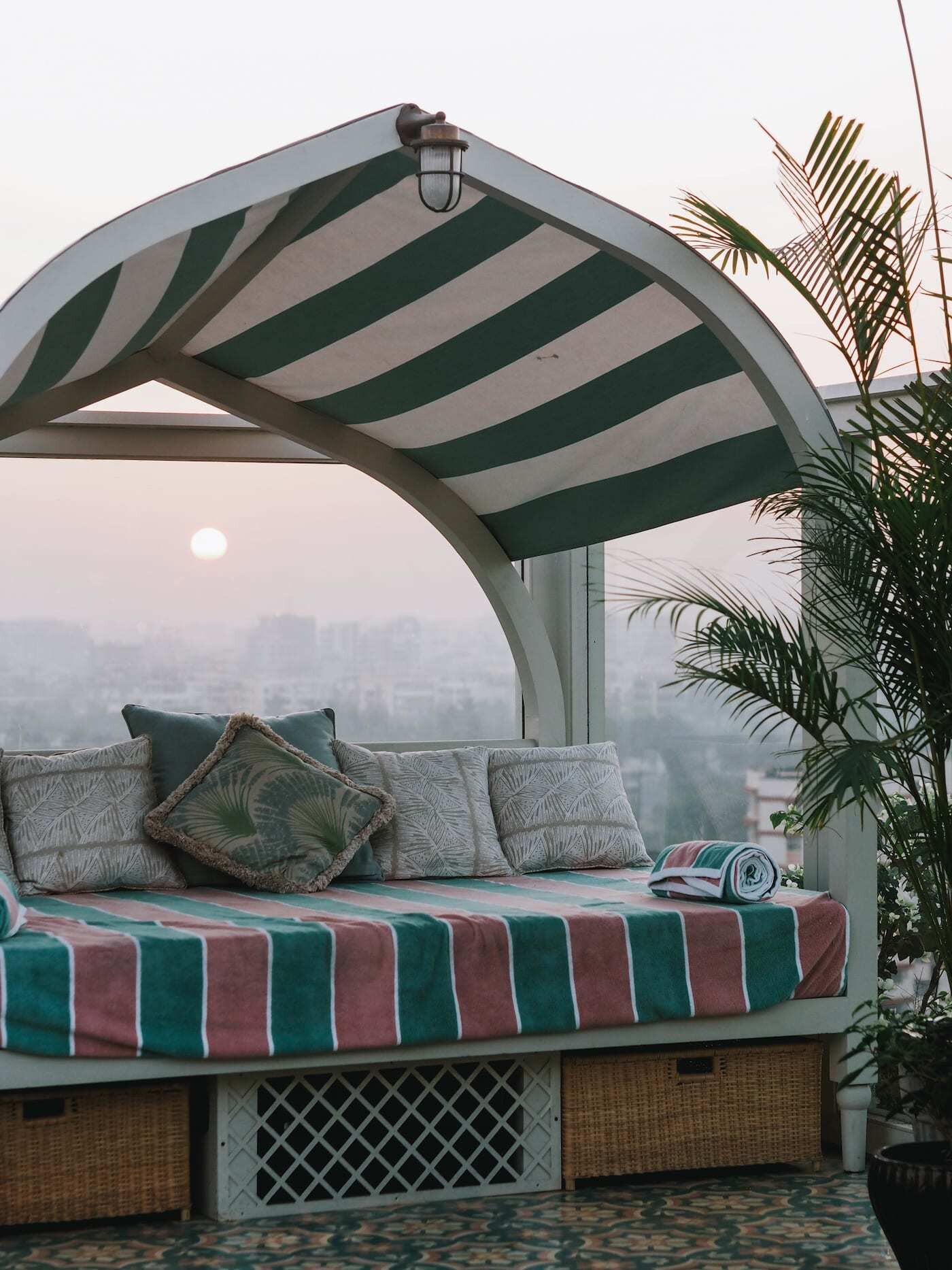

The Taj Mahal Palace
A bucket list one for many visiting Mumbai, THE TAJ MAHAL PALACE is the grandest place to stay in the city. Dating back to 1903, the luxury hotel, located right next to the Gateway of India, has an incredibly rich history which is what appeals to many, but it’s also super luxe (super pricey too!). It employs over 1600 staff, has almost 600 rooms, and during World War I it was converted into a military hospital. It was the first hotel in India to have electricity and the first one to employ women too. Even if you don’t stay, it’s worth popping in for a drink or afternoon tea.
see + do
Gateway of India
Built to commemorate the royal visit of King George V in 1911, this grand gate wasn’t actually completed until way after his visit in 1924! Nevertheless, it’s pretty impressive, standing tall over the Mumbai Harbour. Persistent touts wanting you to pay them to take your picture in front of it will drive you a little bit mad, but it’s certainly worth a visit.
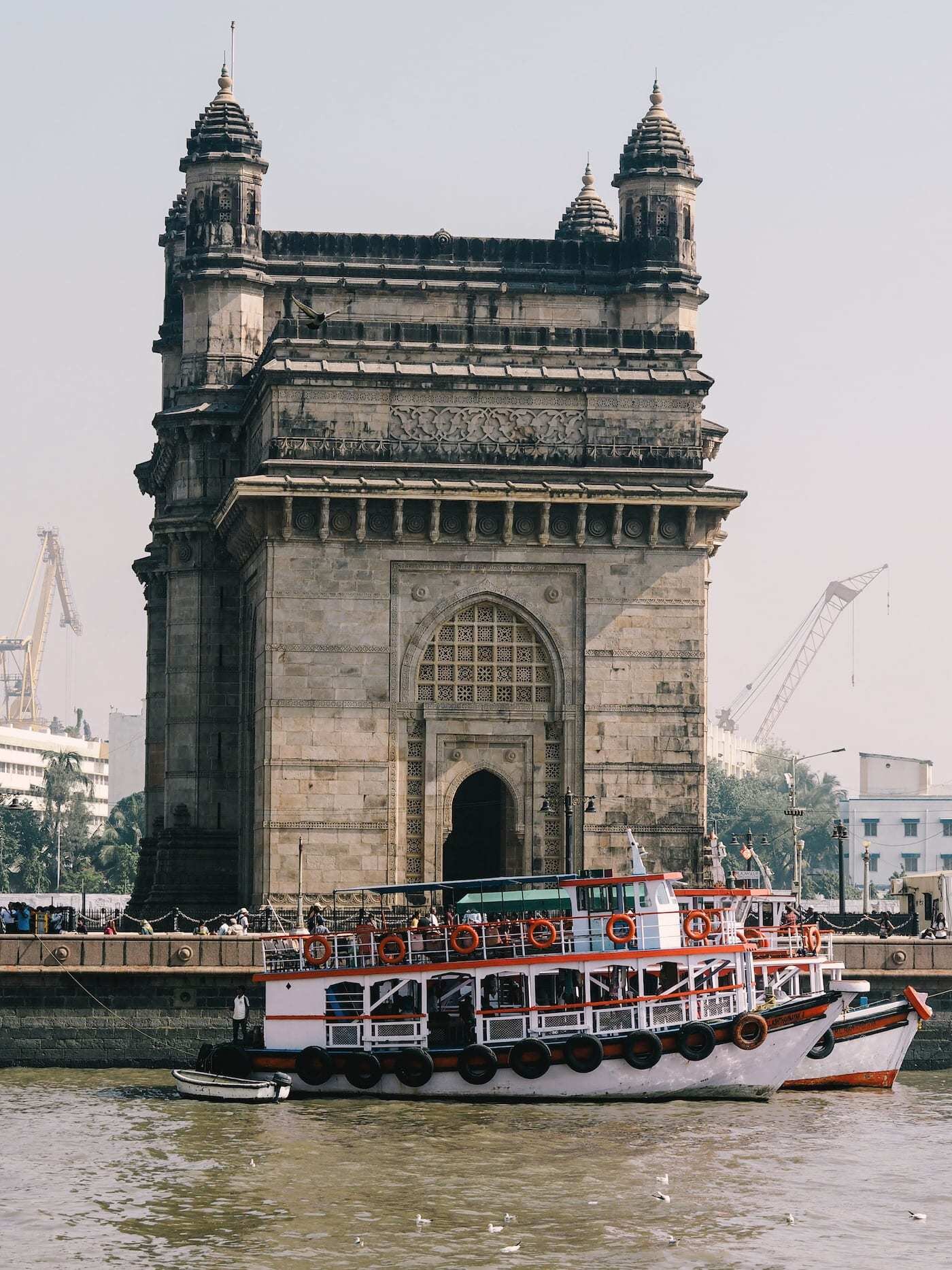
Tea at The Taj Mahal Palace
As mentioned, The Taj Mahal Palace is a super popular one for tourists. If you don’t fancy the £300-a-night room rate, pay the first floor cafe a visit for afternoon tea, or head to the bar for what you can guarantee will be the fanciest gin and tonic you’re going to drink in Mumbai.
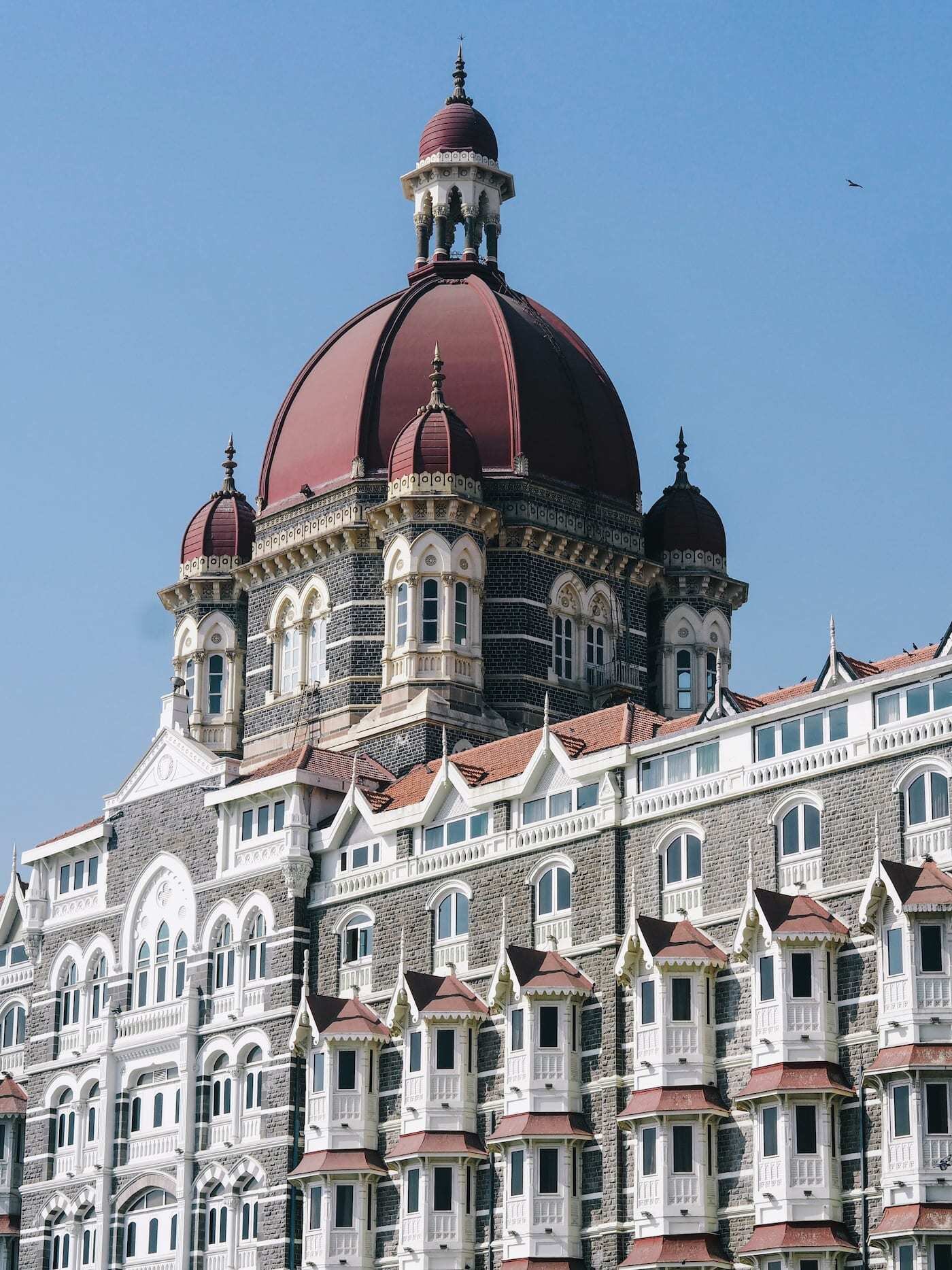
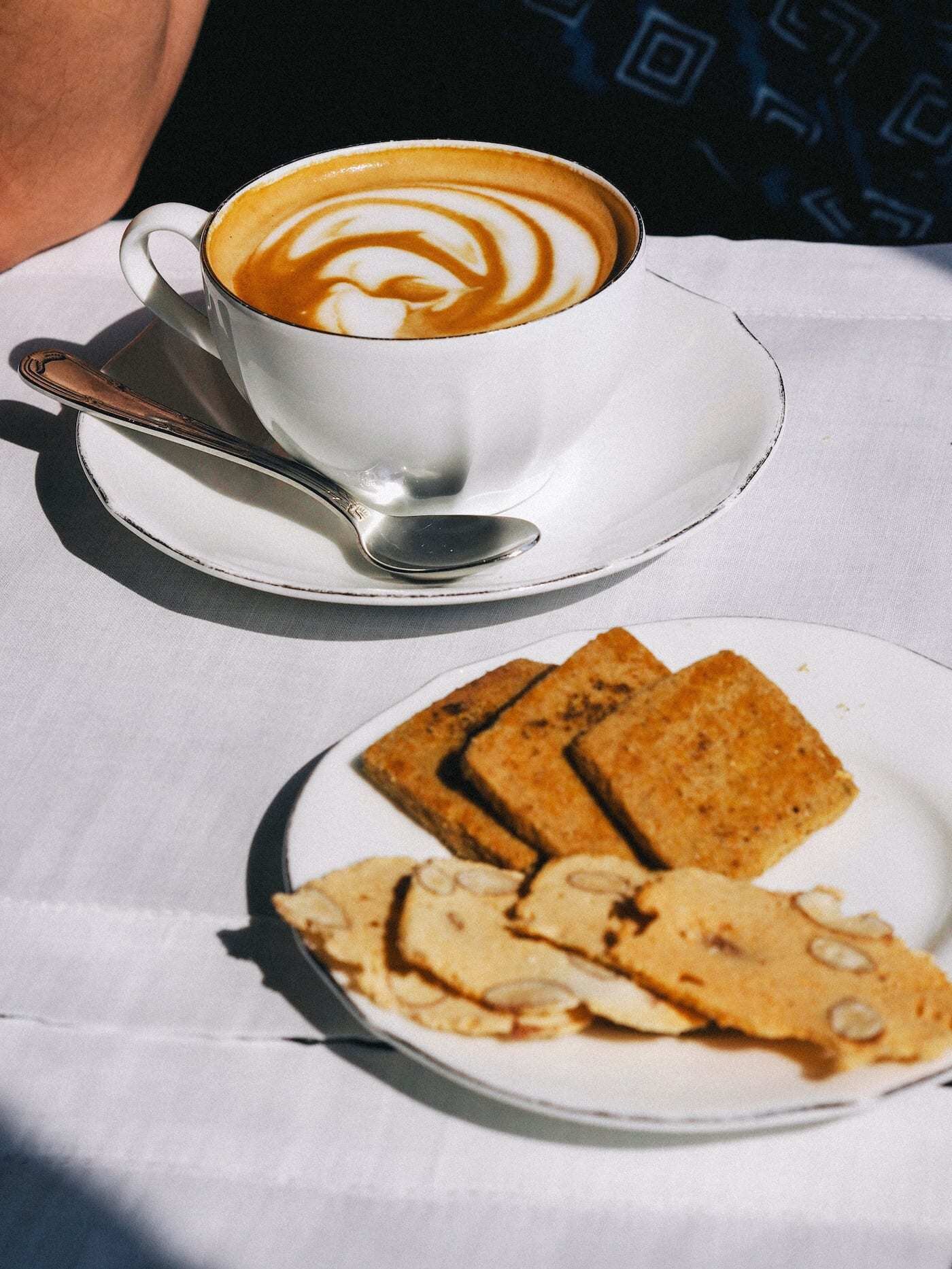
Sunset at Juhu Beach
You don’t want to miss Mumbai’s beautiful sunset, and Juhu Beach is definitely the place to watch it. Huge crowds gather from the hours leading up to it, filling the long sandy beach which seems to stretch out for miles, all waiting for the sun to set and the sky to turn the most striking hot pink. Even well after the sun has set, Mumbai’s humidity doesn’t seem to ever ease off!



Colaba Causeway
Colaba is the area in the city’s southernmost peninsula which is home to Mumabi’s most iconic historical sights. Due to their close proximity, you can tick these off in a morning, but leave time to wander along Colaba Causeway, the long straight street that’s lined with street stalls, cheap clothing shops, markets, bars, restaurants, and a fisherman’s quarter right at the end. It gets a little repetitive but it’s interesting to wander and soak up the atmosphere.
Crawford Market
Crawford Market is one of Mumbai’s most famous wholesale markets, trading since 1871. It remained the city’s main wholesale market ‘til 1966 and still does a roaring trade. It’s definitely worth popping your head in after checking out the Colaba district. It sells everything from spices to condiments, souvenirs, fruits, flowers and even a whole section of pets! It’s pretty hectic (and some of the smells are pretty pungent!) but an experience nonetheless.

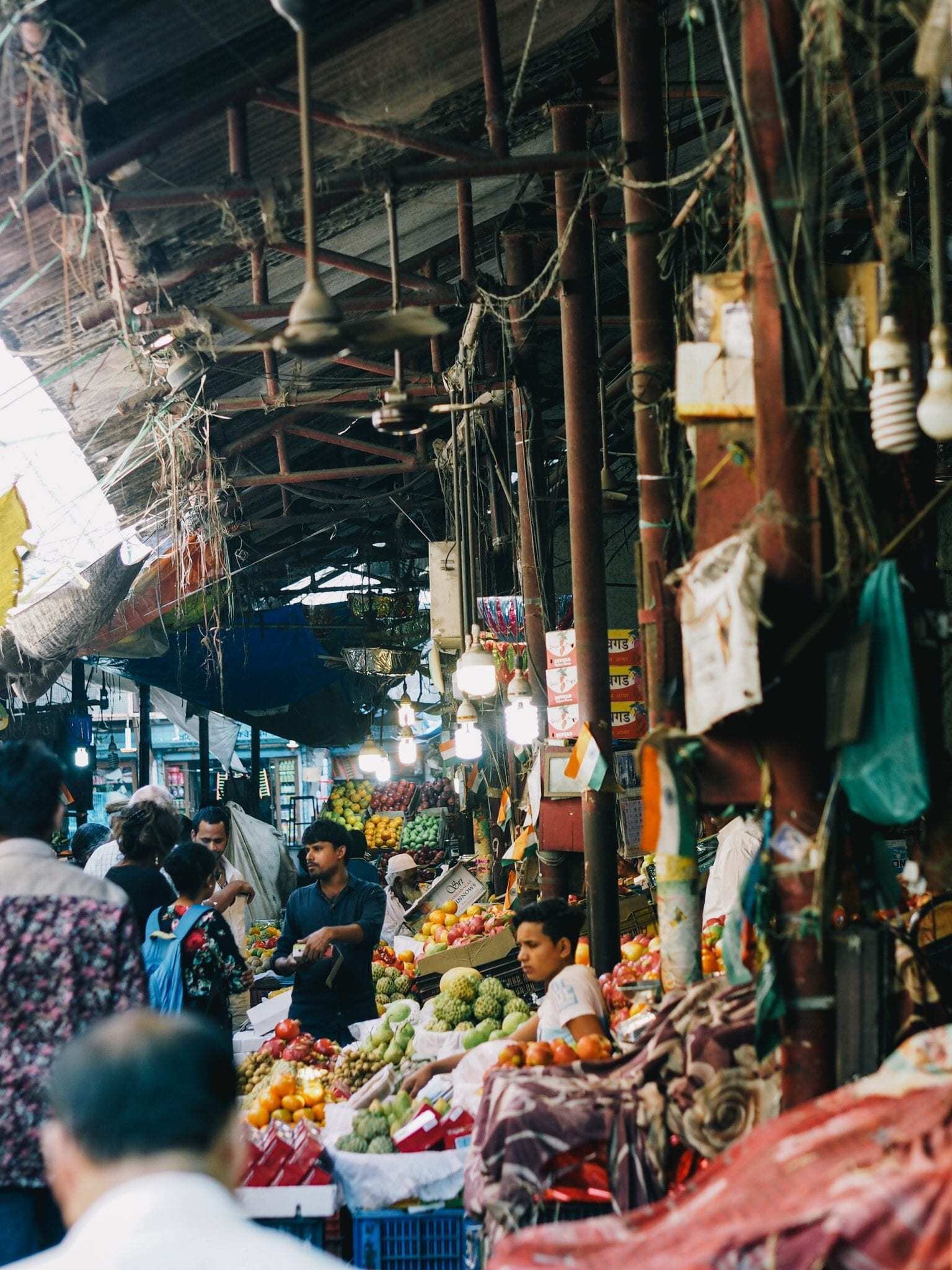
Victoria Terminus (Chhhatrapati Shivaji Terminus)
Grand and imposing, Victoria Terminus is a historic train station in the most impressive Gothic building that really exemplifies colonial-era India. Completed in 1887, it’s an architectural feat with domes, spires, turrets and the most intricate details. I found it a little bit mind-boggling to be so far from home yet admiring this beautiful building that wouldn’t look out of place in Cambridge!

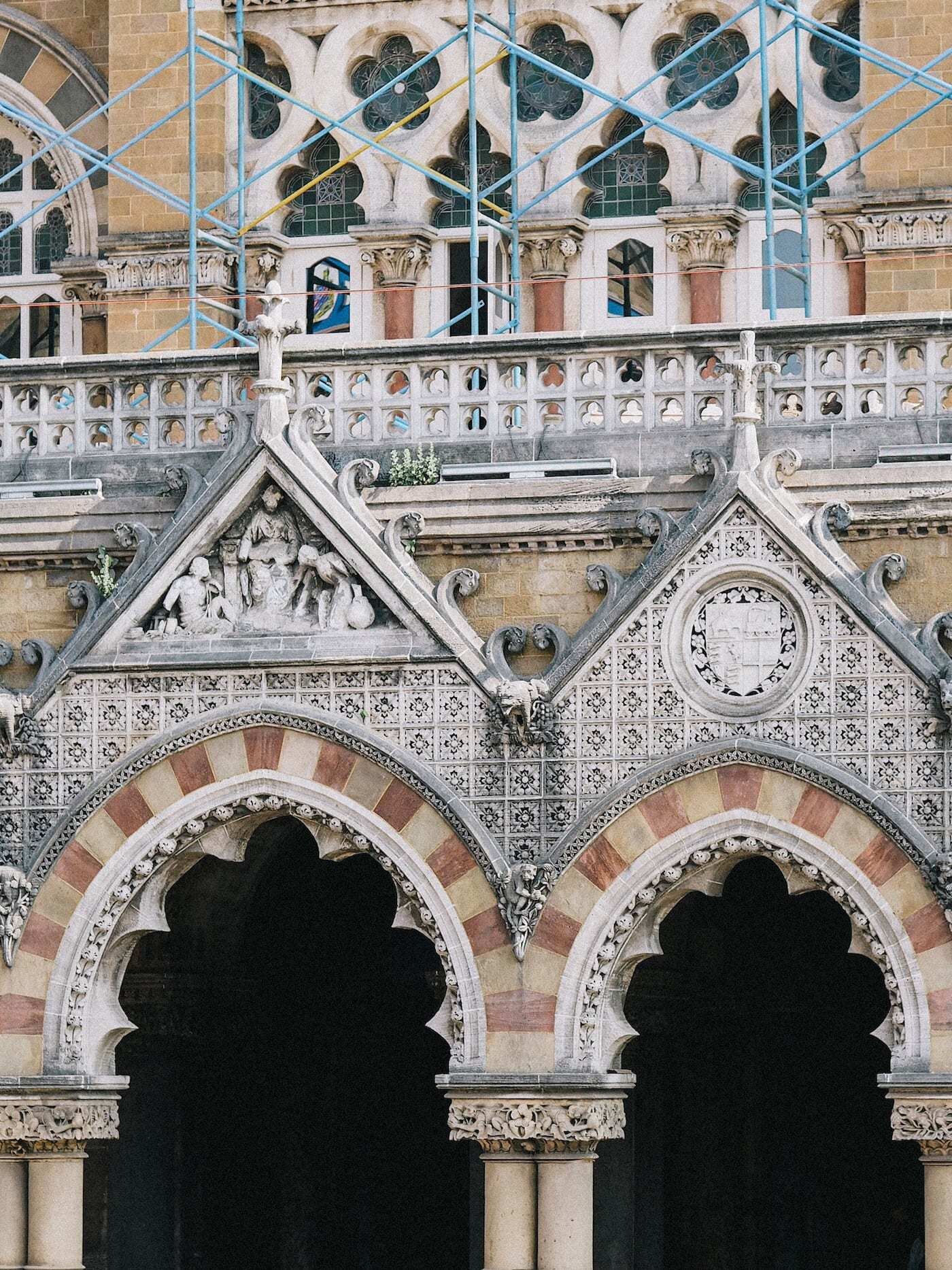
Explore Bandra West
Mumbai is long and thin and the main historical sights to see are right down on the bottom tip around Colaba. Bandra West is up in the northern area of Mumbai and is the more modern and bohemian neighbourhood, the one where all the artists and the Bollywood stars have been living for years. Go thirsty and wander its streets stopping in at the different bars for refreshment. 3rd Road seemed to be a bit of a hub of activity with a slew of cool and relaxed looking bars and restaurants. DOOLALLY TAPROOM, MONKEY BAR and ONE STREET OVER are all fun places to hit up.
Do an authentic cooking experience
For something a bit different, head to a local’s house for lunch! My colleague’s mother, Jyoti Vora, runs some great cooking classes and meal experiences from her own kitchen through the AUTHENTICOOK platform, and will teach you how to make proper roti, dhal and plenty more. We went for lunch and had an incredible thali, some of the best food we ate on the whole trip, including homemade Gajar ka halwa (a traditional carrot-based sweet dessert). Eating with an English-speaking local also gives you a chance to ask all of the questions too! Highly recommend!
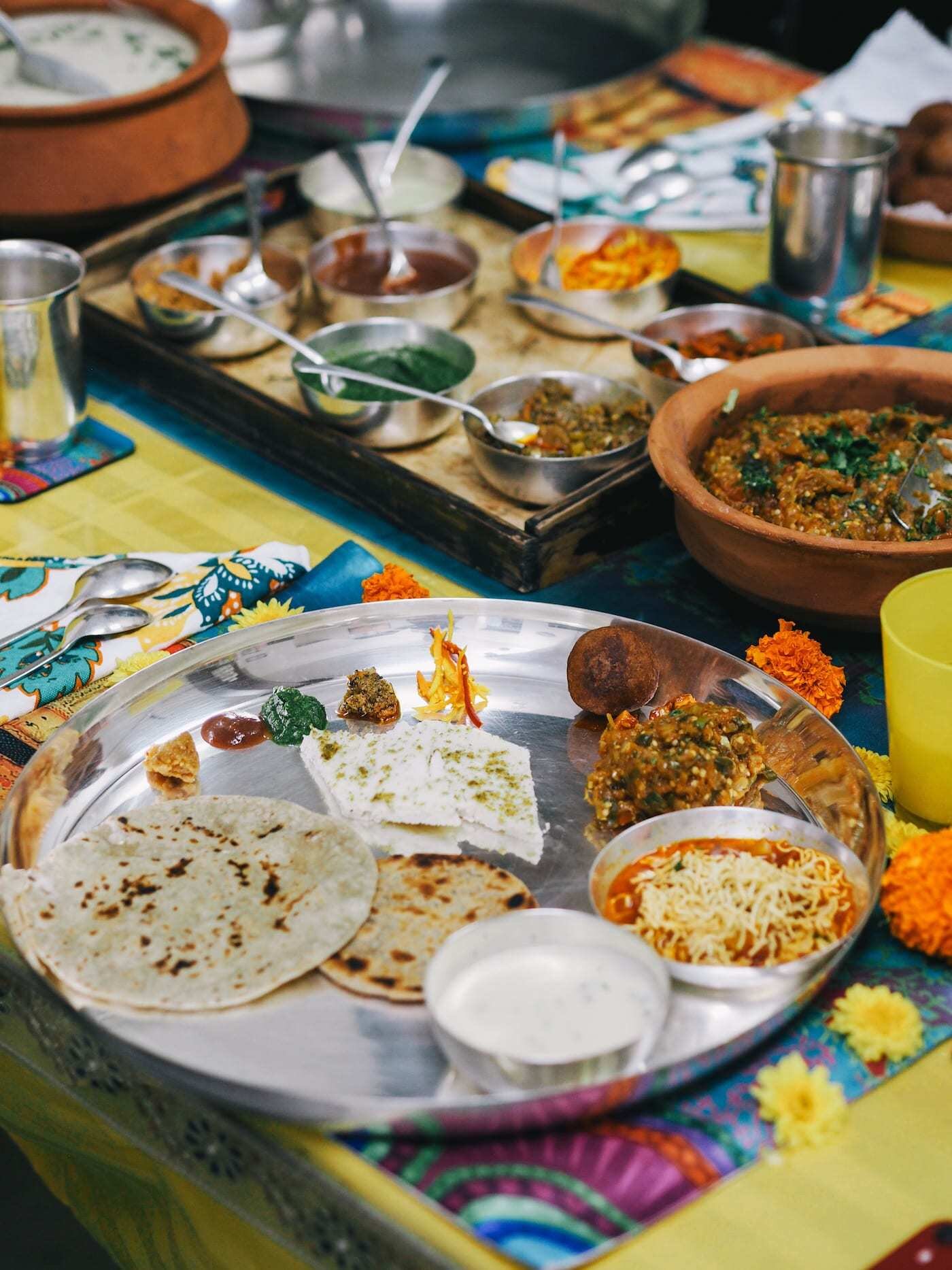

eat + drink
ELCO
ELCO is best place in Mumbai to try pani puri, a popular local street snack, which is a fried hollow crisp puri filled with a delicious broth, chickpeas and potatoes, which kind of explodes in your mouth when you eat it. It sounds bizarre and it is a bit, but they’re very tasty and clearly loved by the locals. You can take a seat in the restaurant or do like a local and just stand up and knock them back in the street. Delicious and dirt cheap.
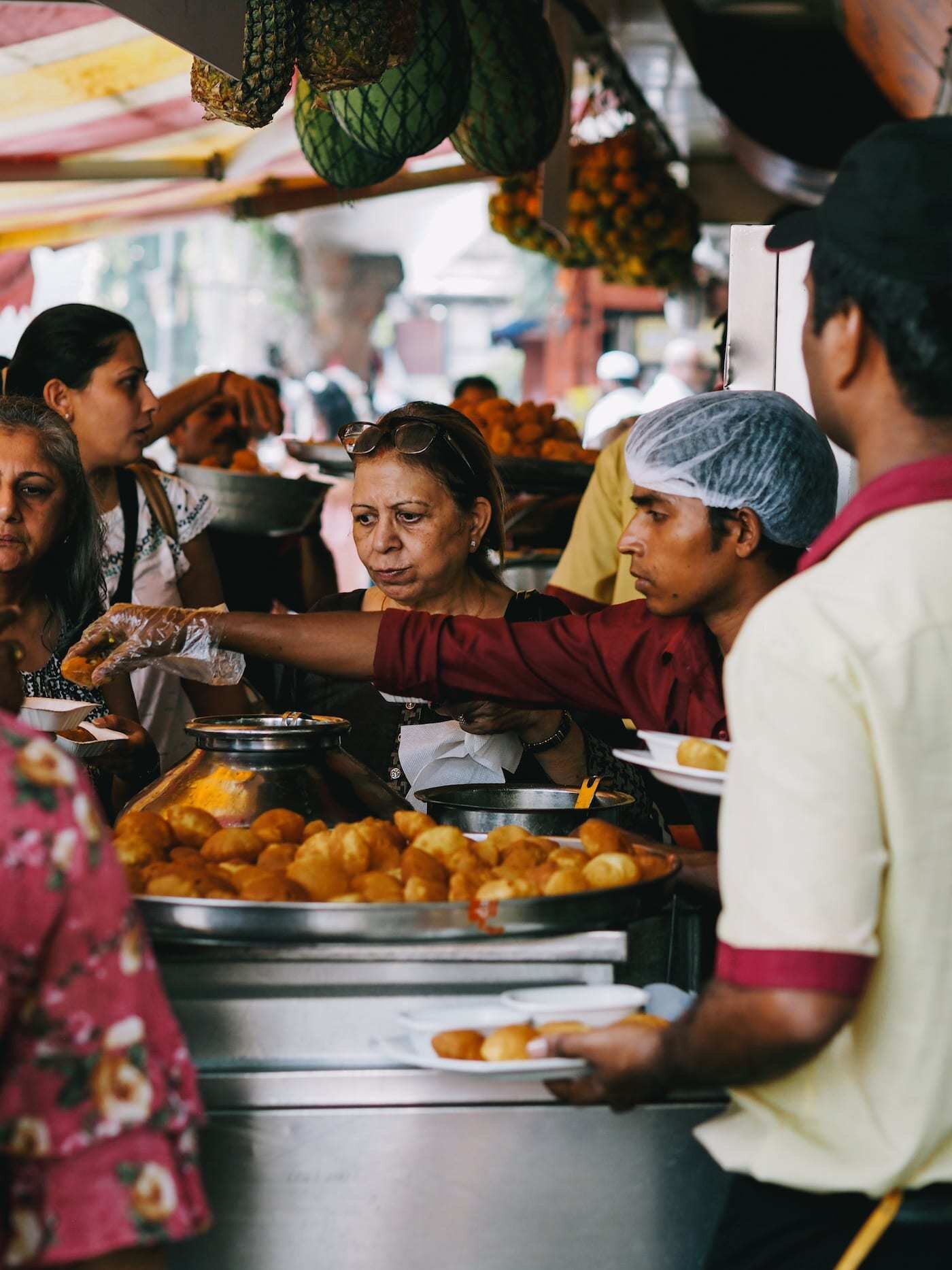
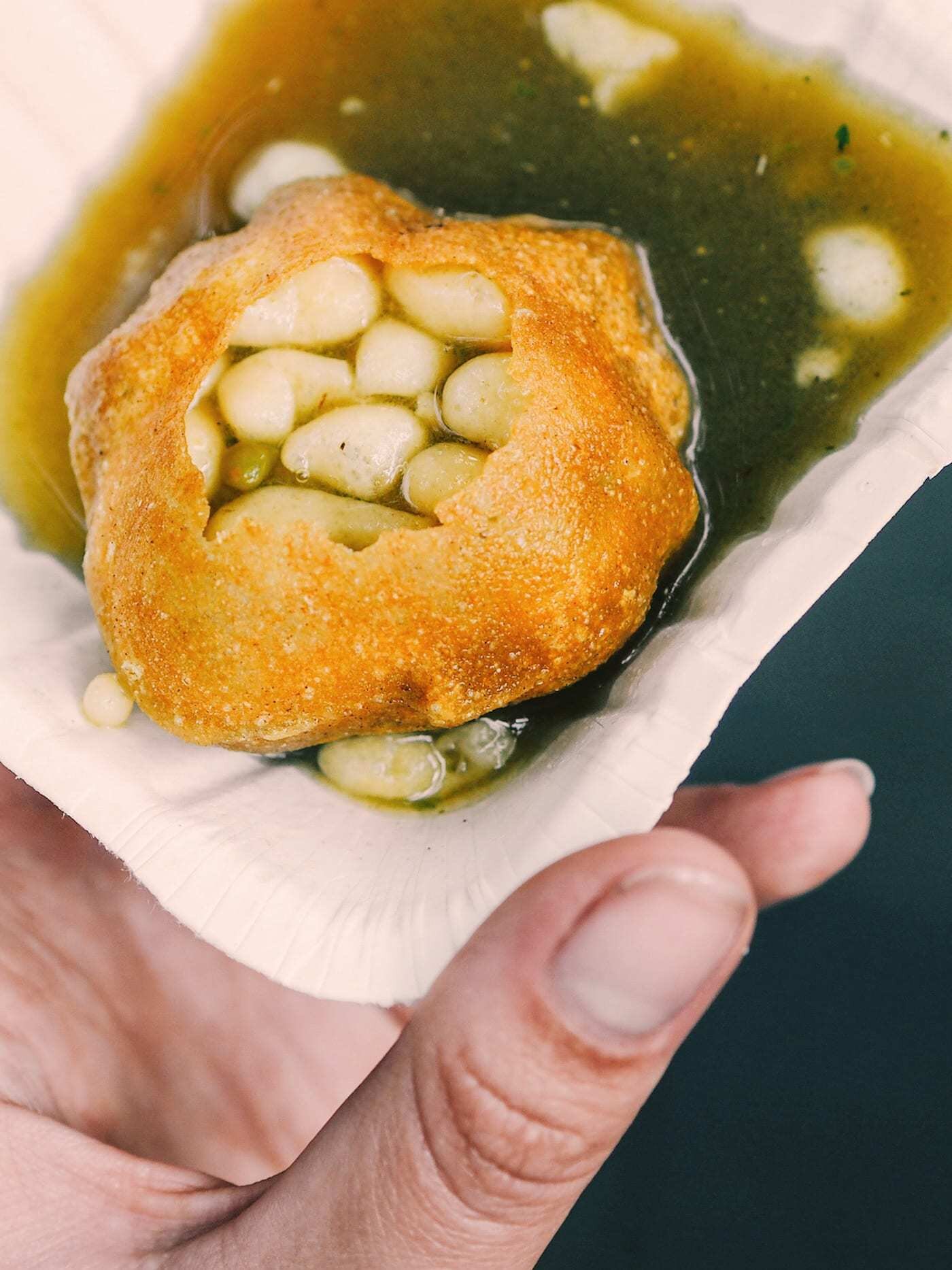
Sree Thaker Bhojanalay
Alas, we didn’t get time to visit but SREE THAKER BHOJANALAY is said to be the spot for thali in Mumbai. Feeling hungry locals since 1945, it’s a laidback vegetarian spot that guarantees to feed you well and cheap. Thalis are very traditional ways of eating in India (they’re large plates made up of lots of small portions of curries, chutneys and rotis) are a good way to get a real understanding of all the Indian flavours.
Olympia Coffee House
A Colaba Causeway institution, OLYMPIA COFFEE HOUSE is a very local, very low key restaurant opposite Leopold’s Bar (famed by Shantaram) which I’d highly recommend hitting up for breakfast. It’s in the Lonely Planet guide so it’s not exactly under the radar, but it’s still 90% locals in there. We shared an omelette, dhal, rotis and chai and it was incredibly tasty and came to less than £3.
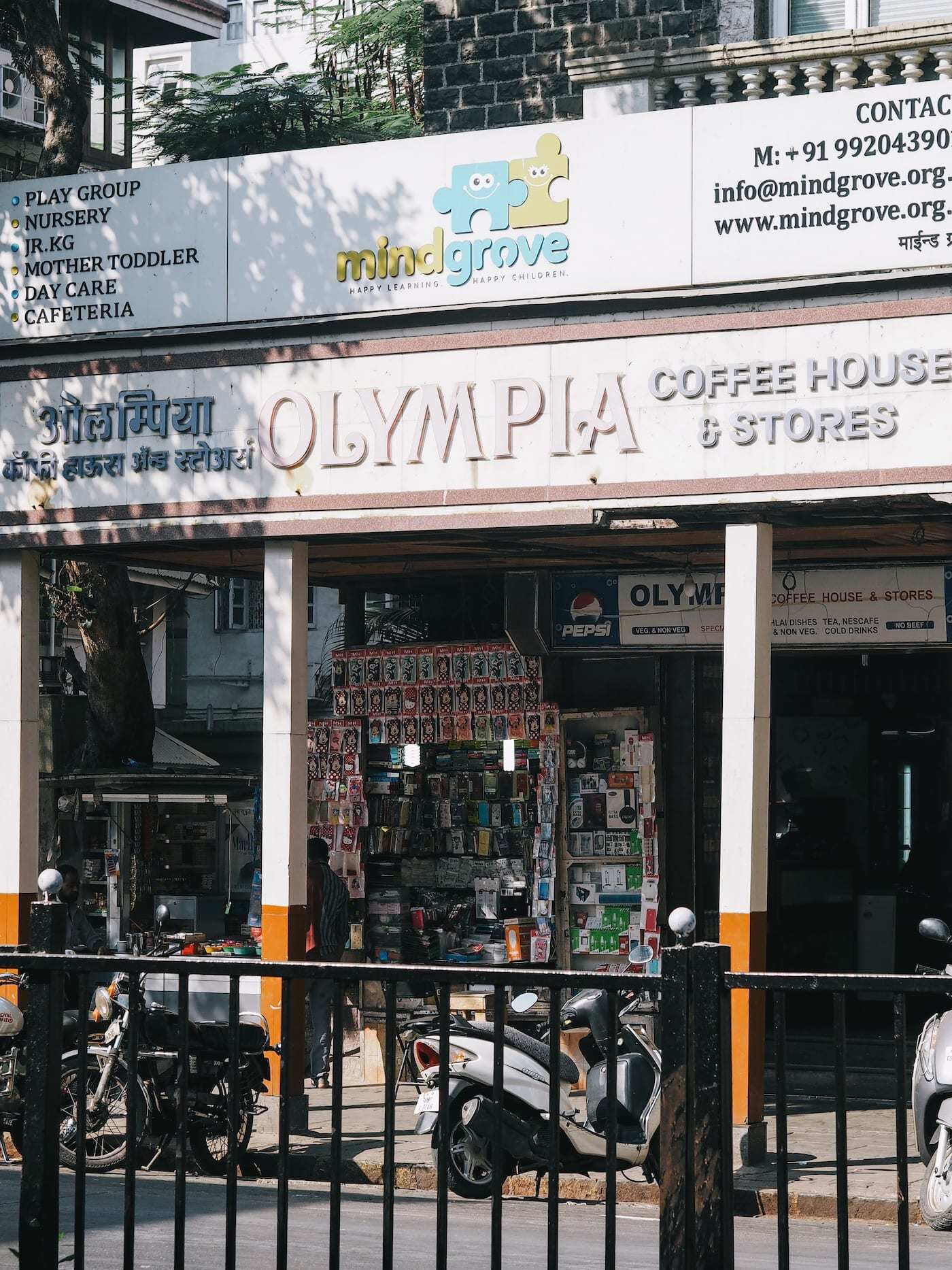

Doolally Taproom
If you’re sick of drinking Kingfisher in India, DOOLALLY TAPROOM is a great port of call in Mumbai. A craft beer bar in Bandra West, it has a selection of great locally brewed beers on tap, a delicious looking food menu (fries and burgers mixed in amongst modern Indian dishes), outdoor seating, fast WiFi and a big screen which sports fans will appreciate. It’s a relaxed spot with a cool ambience and had a mix of people working on laptops, eating dinner, and getting drunk with their mates.
Leopold’s Cafe
The aforementioned LEOPOLD'S CAFE is a cliched spot for tourists, but one that readers of Shantaram will probably want to visit. Located on the Colaba Causeway, pretty much behind Taj Mahal Palace, it’s been around since 1871, and is somewhere you might want to swing by for just a quick drink and not a lot else!
Bar Bank
A fun spot for casual dinner and drinks in Juhu, BAR BANK is an open-air food court, which is a very new concept for Mumbai but feels a bit like Street Feast. There’s music, string lights, cheap drinks with prices that go up and down with demand (like the stock exchange concept), and some great street food with everything from fried chicken to omelettes, spicy Asian dishes, and ice lollies. It’s just 5 minutes in a tuk tuk from Soho House and shows off a more contemporary side of Mumbai.
Cecconi’s Mumbai
Don’t want to be that person who recommends that you eat Italian food in a city as exciting and vibrant as Mumbai but you know what, after curry for breakfast, lunch and dinner, you might be wanting a break! We grabbed a quick late night bite in CECCONI'S after going out for some beers, and it totally hit the spot. That burrata never tasted so good!
Dakshinayan South Indian Restaurant
We read about DAKSHINAYAN in Soho House’s local recommendations guide, and walked up along the beach to find it for brunch one morning. We had to wait for a table (it seems to be a popular spot for family weekend outings) but it was so very delicious. It’s quite different to a lot of the food you’ll eat in Mumbai as it’s strictly south Indian cuisine, a little less spicy and more rice-based dishes. Ed had a gigantic masala dosa and I had a delicious rice plate - both amazing value and I’d highly recommend!

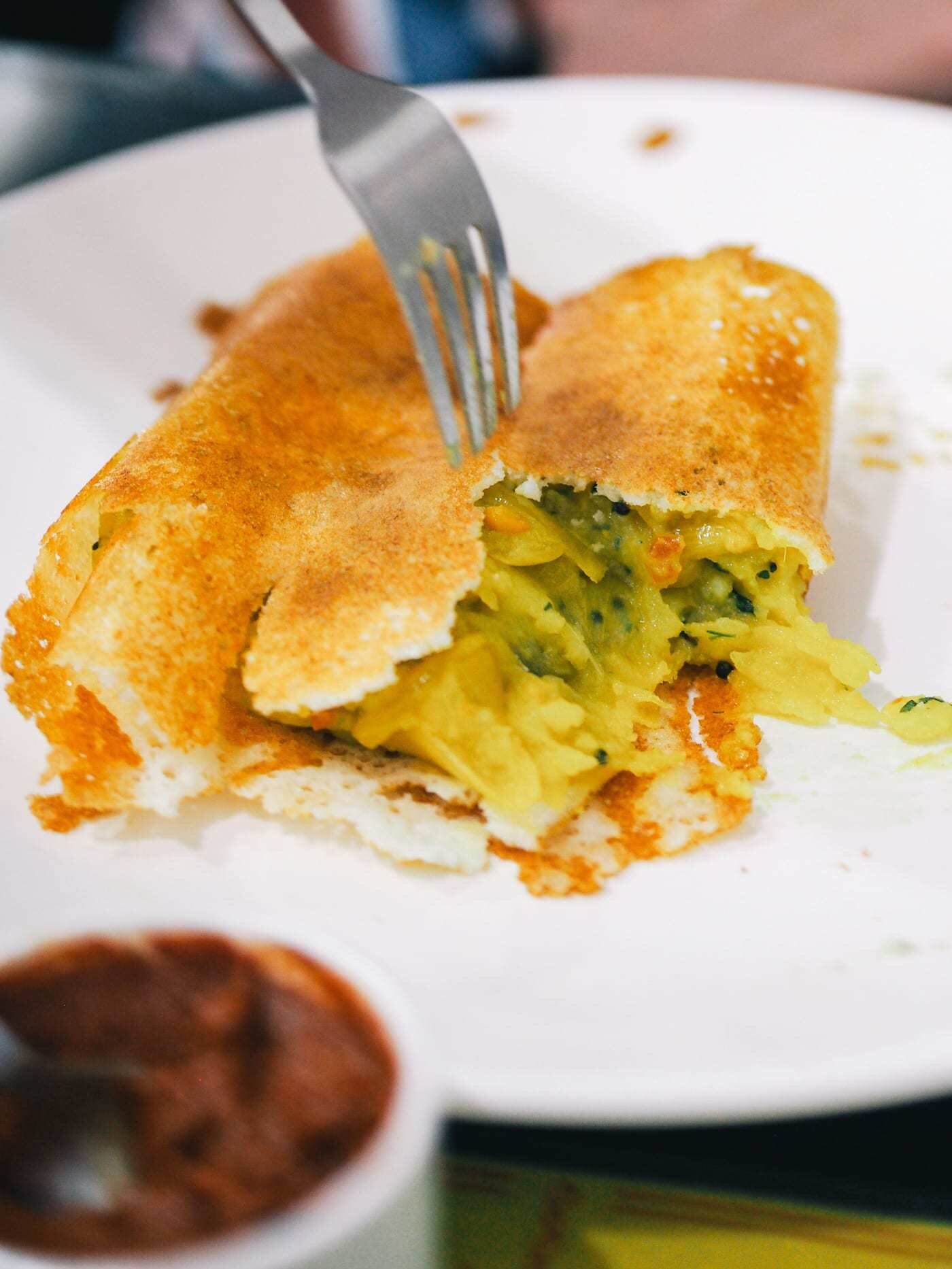
MORE INDIA POSTS TO READ:
CHECKING IN: SOHO HOUSE MUMBAI
things worth knowing before you go
— Mumbai is long and thin and traffic is pretty mental, meaning it takes a long time to get anywhere. We spent over an hour and a half in a cab on a couple of occasions so it’s worth going with a plan, or else you’ll spend a LOT of time in traffic.
— Uber works brilliantly here and is mad, mad cheap. It’s the easiest and most efficient way to get around, assuming you have Internet access. Jumping in a cab is just as easy but you can often end up paying a whole lot more if you don’t properly agree on a fare beforehand. Anywhere north of Bandra, you can get around via tuk tuk — they’re the cheapest and easiest way to get around the Western Suburbs. Tuk tuks always work on the meter in Mumbai which means you know you're getting the right fare.
— Travel with cash, in ideally small denominations. It will make your life in tuk tuks and restaurants a whole lot easier.
— Though Mumbai feels, in parts, a lot more developed than other parts of India, it is of course important to be very weary of what you eat and drink to avoid getting ill. Stick to bottled water only, no ice, and abide the rule of 'if it's freshly cooked, it's okay'. We avoided fruits on breakfast buffets, all salad/ raw vegetables/ cold chutneys served with curries, and only ate in places we saw other people eating, and didn't get ill at all.
— Mumbai is seriously humid, and it stays hot and sweaty well after the sun sets. Though it's a lot more cosmopolitan here than in other parts of India, it's still worth being a little weary about what you were. Don't bear too much flesh and go with loose, breeze clothing for comfort.
— A visa is required for entering India, and the application process is pretty long and frustrating at times. Do it well in advance of your trip as it does take a little while to both get your head around and get it processed.
